“Cities really are our future,” declared British architect Norman Foster last week during the kick-off event for his new educational institute in Madrid. “By 2050, 90 percent of the global population will be living in cities, which generate 90 percent of the world’s wealth but also 70 percent of its emissions,” he continued. “To put things into perspective, this will require the creation of something like 17 Madrids every year.” In response to the challenge, the newly created Norman Foster Institute on Sustainable Cities, in partnership with one of Spain’s most prestigious public universities, the Universidad Autónoma de Madrid (UAM), has launched a master’s program that aims to train future decision-makers in how sustainable urban development might be achieved. Selected from 1,400 applicants, the 30 students in the program’s inaugural cycle are mostly in their late 20s and early 30s, hail from 23 countries across five continents, and come from a variety of professional backgrounds—60 percent from the world of architecture, the remainder from disciplines such as engineering, economics, psychology, politics, and design.
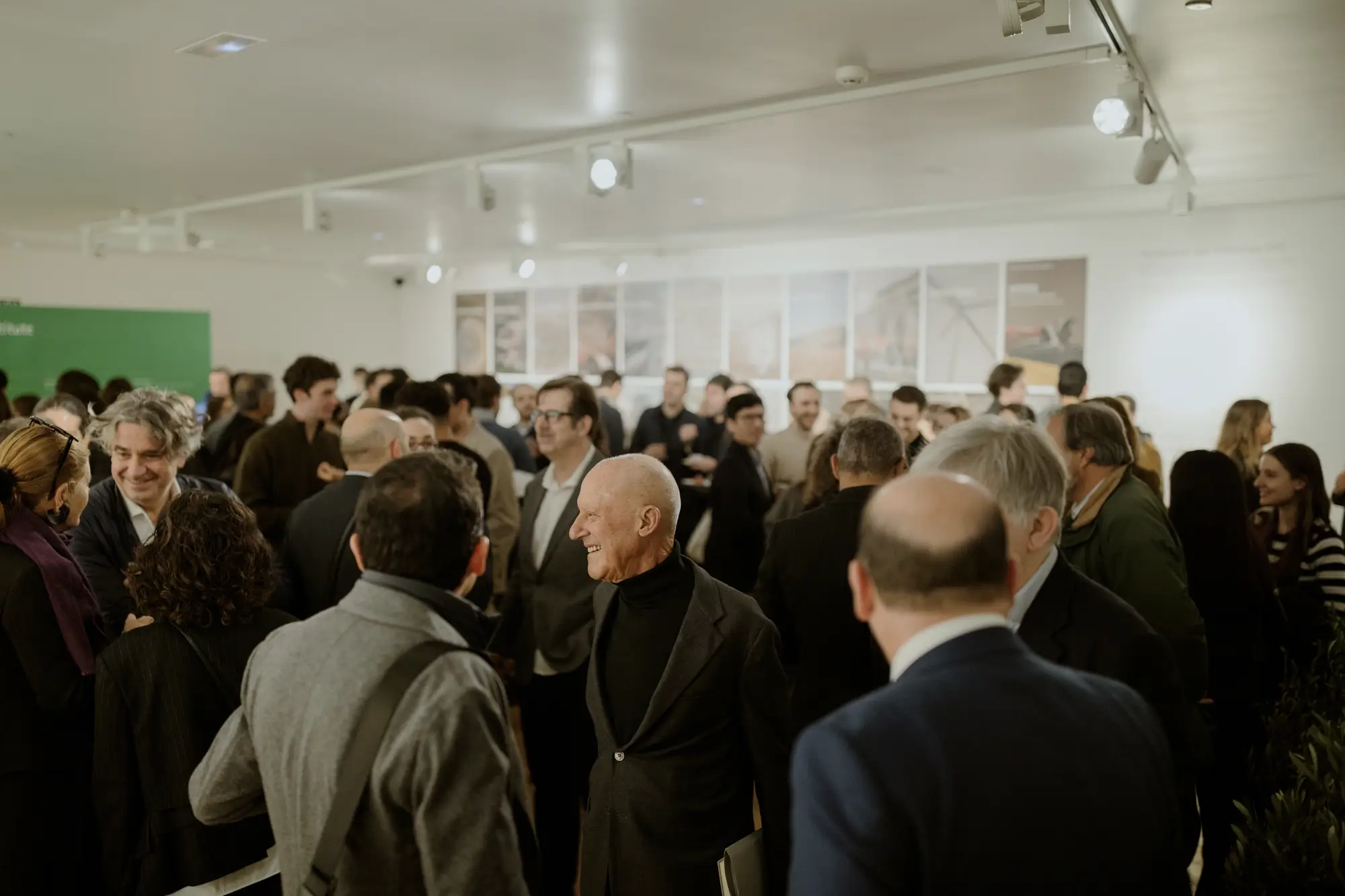
Attendees mingle at the January 22 launch event of the Norman Foster Institute in Madrid. Photo courtesy Norman Foster Foundation
Based in the Spanish capital, the students will use both UAM premises and a new “laboratory” space specially acquired and fitted out by the Norman Foster Foundation (which was established in 2017 in Madrid, where Foster’s wife, Elena Ochoa, was a professor for many years). The master’s program, Foster told RECORD, “is a logical development that has grown out of the workshops, public debates, forums, thinktanks, and summits organized by the foundation, which engages with something like 140 institutions around the world.” Through those connections, the foundation has put together an international faculty that includes Pritzker Prize–winning architects Alejandro Aravena, Shigeru Ban, Francis Kéré, and Anne Lacaton, along with academics like Beatriz Colomina (Princeton), Kent Larson and Dava Newman (both of the Massachusetts Institute of Technology), and Edgar Pieterse (University of Cape Town, South Africa). Also on-board are figures like Yvonne Aki-Sawyerr, the mayor of Freetown in Sierra Leone, Spanish artist Cristina Iglesias, and former Spanish justice minister José María Michavila.
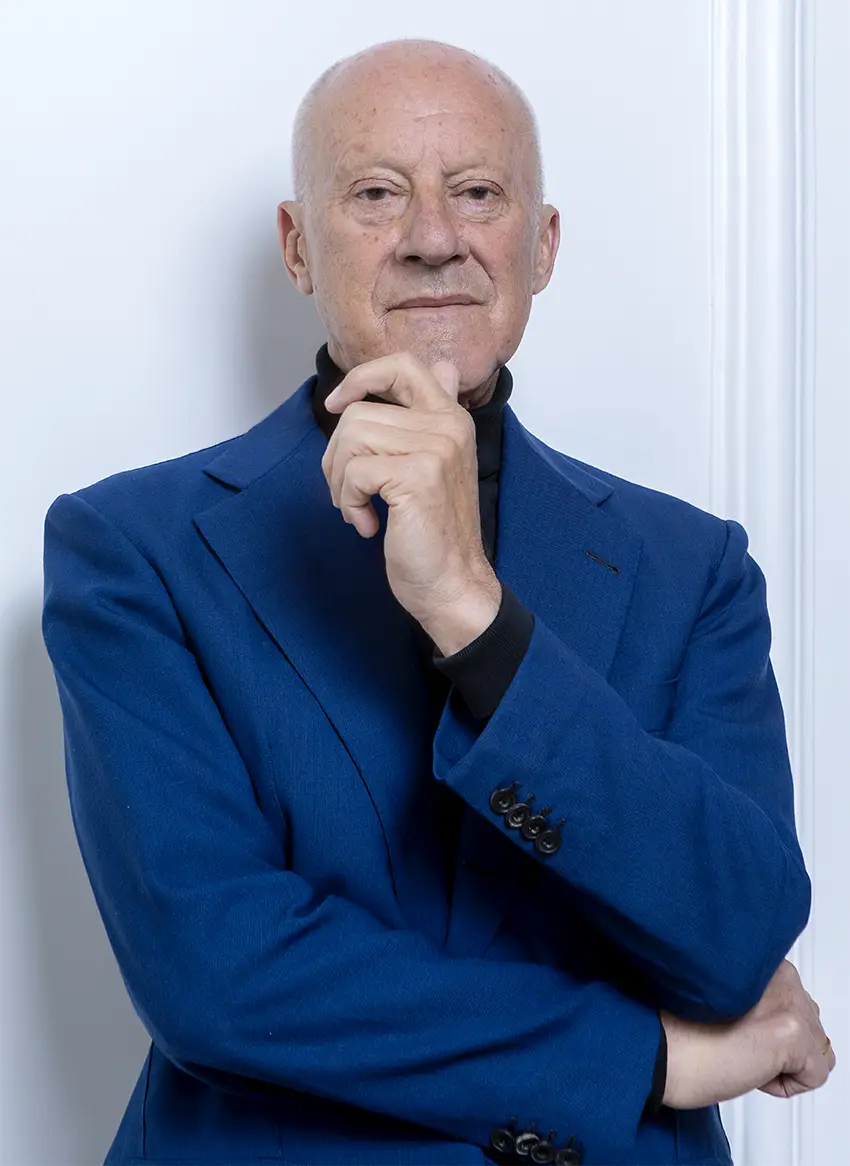
Norman Foster. Photo by Jose Manuel Ballester, courtesy the Norman Foster Foundation
Though Foster admitted in his opening remarks that the urbanization rollercoaster will happen elsewhere than in Europe, the three pilot cities for the program’s initial run are Athens, Bilbao, and San Marino. If the latter seems a surprising choice, it no doubt offers lessons with respect to governance—the tiny hillside town of 35,000 is one of the world’s oldest continually functioning republics and few surviving city-states—and mass tourism, since it receives 2 million visitors every year. Selection of the initial trio of cities, representatives of the institute told RECORD, was based on existing relationships and on geographical practicalities for a program that is starting modestly with the ambition to grow in the future. “The methods we will be adopting are applicable to cities globally, whether they’re Asian, Middle Eastern, or Latin American,” said Foster. “The philosophy, be it formal or informal, is in that sense universal.” From what journalists were shown, those methods will rely heavily on digital interfaces developed by the foundation: based on open-source data sets, they are designed to allow cities to be compared in terms of criteria such as walkability, provision of green open space, social vibrancy, compactness, and so on.
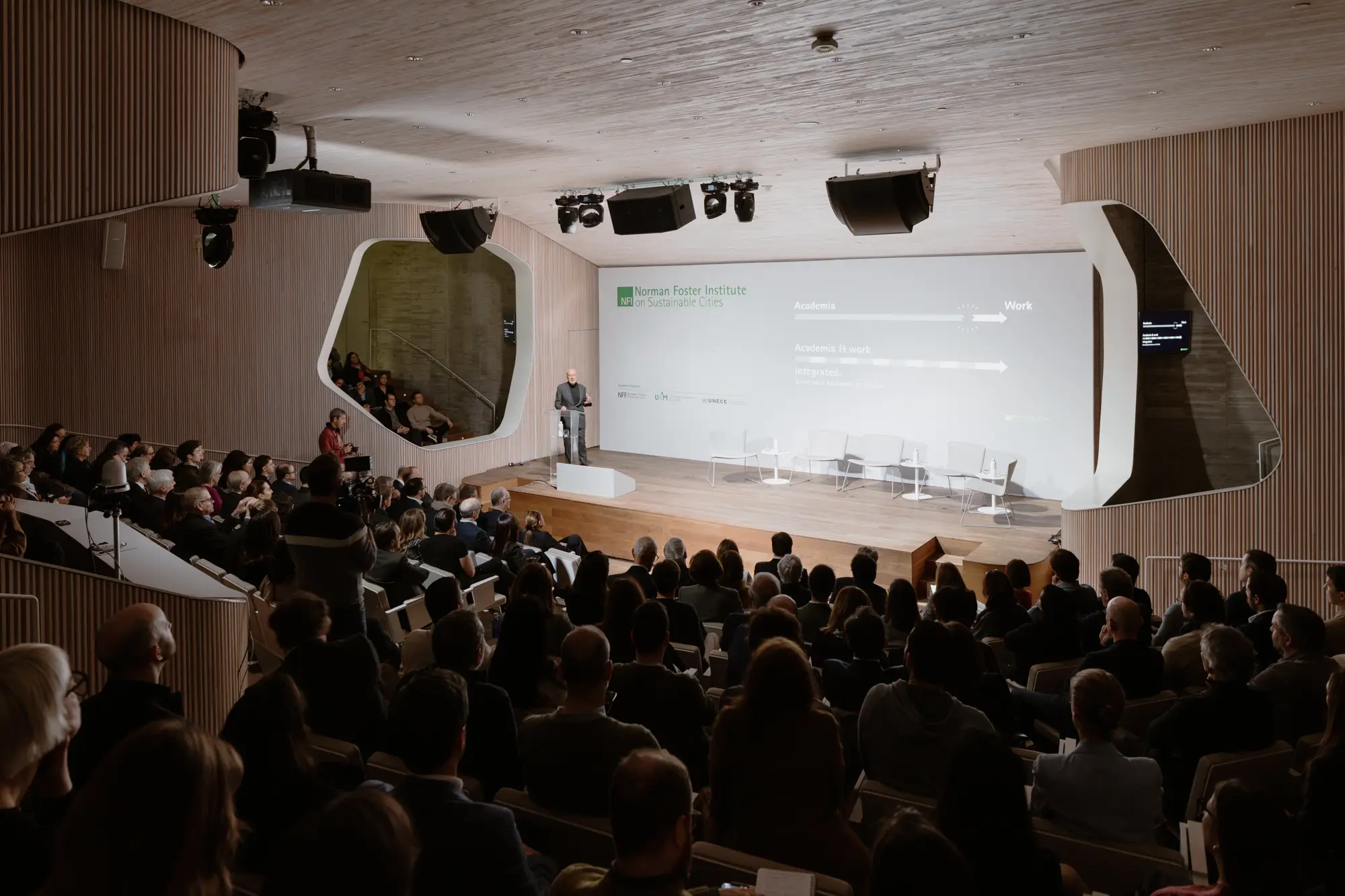
Foster gives remarks at the opening event. Photo courtesy Norman Foster Foundation
Speaking at the opening event, faculty members gave a taste of what students might expect. For Foster, who warned against too top-down an approach, “the ideal city we would advocate is dense, compact, walkable, and user-friendly. The opposite of the sprawling car-borne city, it’s likely to have neighborhoods that are mixed in use and permit the spontaneity and unpredictability of city life.”
After Larson wowed event attendees with some of the perhaps surprising conclusions drawn from research carried out at MIT—the greatest reduction in emissions would come from the elimination of commuting, while a meatless diet would have more impact than electric cars—Newman, a former deputy administrator at NASA, dreamed of putting data farms in space and declared that “Mars is not option B. Sorry Elon!” Pieterse highlighted the “cascading governance failures linked to the colonial legacy” in an African continent whose current urban population—600 million—is set to triple, while Aravena pointed out how the failure to address poverty in South America had created the conditions for the emergence of a “parallel state run by narcos.” The joker in the speaker pack—at least that’s how it seemed to many present—was controversial New York Times columnist Bret Stephens, listed as a faculty member, who bookended a talk about the crises facing informed journalism with a cringe-making explanation of why, in his opinion, Foster’s Hearst Tower is better than Renzo Piano’s New York Times Building (one supposedly allows you to see the city, the other apparently does not).
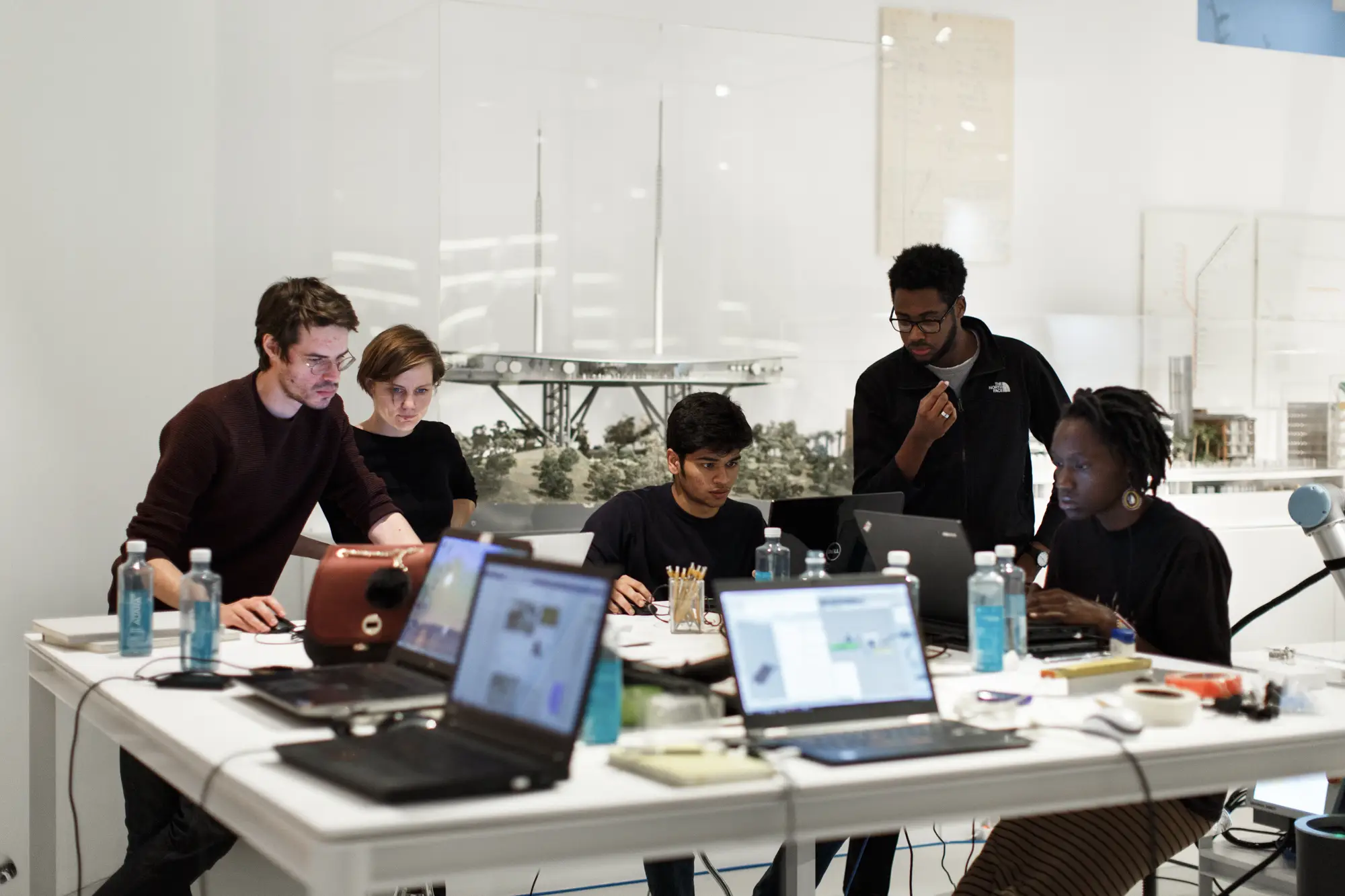

With 30 students enrolled in its first cohort, the Norman Foster Institute was established with a specifc focus on sustainable urban development. Photos by Pablo Gómez Ogando, courtesy the Norman Foster Foundation
After the event, in an interview with RECORD, Foster explained how the institute had already been approached by “a government entity” to explore the possibility of providing shorter courses about issues of urban sustainability to those in its employ. Asked about the architecture profession’s current lack of lobbying power, he replied that “all human environments are designed. Somebody has to design them—they can do it well, mediocrely, or badly. I think there are things that the architectural profession can do [with respect to steering responses to environmental challenges], but for whatever reason is not doing. Some of that is being addressed by the foundation, and to that extent I think it fills an important gap.”




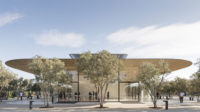
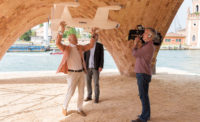
Post a comment to this article
Report Abusive Comment